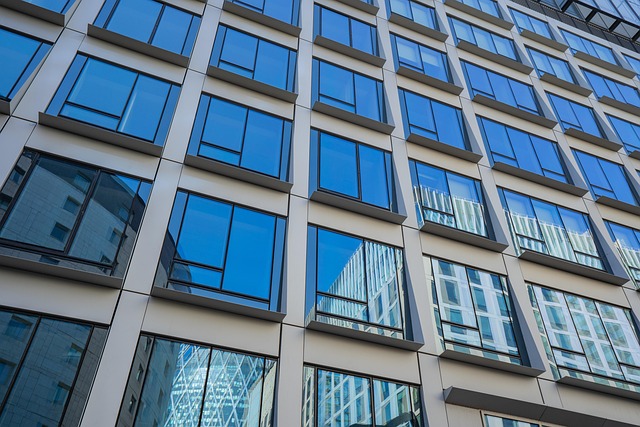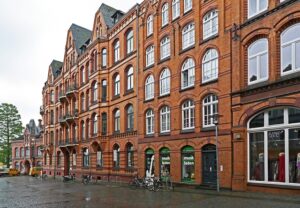Commercial air doors made from stainless steel are durable solutions for corrosive environments, offering improved climate control and energy efficiency. These specialized doors prevent energy loss in humid, chemical, or harsh weather conditions, with features like advanced sealing and corrosion-resistant materials. They're ideal for warehouses, retail spaces, and industrial applications, providing effective entrance barriers while minimizing HVAC costs. Proper installation and maintenance, including tight sealing and regular inspections, ensure their longevity. Real-world applications demonstrate their versatility and superior performance in diverse industries, setting a new standard for commercial door systems.
In corrosive environments, choosing the right commercial air door is essential for maintaining optimal performance and longevity. This article explores stainless steel commercial air doors as a robust solution for challenging settings where traditional doors falter. We’ll delve into the unique challenges of corrosive environments, highlighting the benefits of stainless steel, key design features, installation tips, and successful real-world implementations. By understanding these factors, businesses can make informed decisions to enhance their facilities’ efficiency and durability.
- Understanding Corrosive Environments: Challenges and Requirements
- Benefits of Stainless Steel Commercial Air Doors
- Key Features and Designs for Optimal Performance
- Installation and Maintenance Considerations
- Case Studies: Successful Implementations in Corrosive Settings
Understanding Corrosive Environments: Challenges and Requirements

Corrosive environments pose unique challenges for any material, especially in commercial settings where durability and longevity are paramount. These environments, often characterized by high humidity, exposure to chemicals, or harsh weather conditions, demand specialized solutions for entrance ways. Commercial air doors, specifically designed as entrance air barriers, play a crucial role in maintaining optimal climate control while minimizing energy loss. They act as effective retail air barriers, preventing unwanted intruders and ensuring efficient HVAC systems.
Understanding the specific needs of these environments is essential when selecting appropriate commercial door systems. Features like weather-resistant construction, corrosion-resistant materials (like stainless steel), and advanced sealing mechanisms are vital for industrial entrance solutions. Heated air doors, for instance, offer added protection in cold climates while energy efficient barriers contribute to cost savings by regulating indoor temperatures. These innovative commercial entrance technologies not only enhance operational efficiency but also prolong the lifespan of equipment in corrosive settings.
Benefits of Stainless Steel Commercial Air Doors

Stainless steel commercial air doors offer a multitude of benefits for businesses operating in corrosive environments. Firstly, their robust construction ensures superior durability and longevity, with stainless steel resisting rust and corrosion better than traditional materials like aluminum or wood. This makes them ideal for harsh industrial settings where frequent use and exposure to moisture can quickly degrade doors.
Additionally, these air doors serve as effective entrance air barriers, commercial door systems that maintain indoor climate control. They act as energy-efficient barriers, minimizing the loss of heated or cooled air, which leads to significant cost savings in HVAC operations. Features like warehouse door heating and retail air barriers ensure optimal comfort and efficiency for various commercial spaces, from warehouses to retail stores. Advanced commercial entrance technology, including HVAC air curtains, further enhances their performance by providing a seamless seal against unwanted drafts and contaminants.
Key Features and Designs for Optimal Performance

When it comes to commercial air doors designed for corrosive environments, key features and innovative designs play a pivotal role in ensuring optimal performance. These doors are specifically engineered to withstand harsh conditions, offering enhanced durability and longevity. Features like robust stainless steel construction, high-quality gaskets, and advanced sealing mechanisms ensure they act as effective entrance air barriers, commercial door systems, and energy-efficient solutions.
Additionally, various design elements contribute to their effectiveness as climate control doors and heated air doors, especially in industrial settings. Incorporating smart technology, such as automated controls and sensors, allows for precise temperature regulation and enhanced HVAC (heating, ventilation, and air conditioning) performance. These modern commercial entrance technologies not only facilitate seamless access but also significantly improve energy efficiency, making them ideal solutions for retail air barriers, warehouse door heating, and other demanding industrial entrance solutions.
Installation and Maintenance Considerations

The installation and ongoing maintenance of stainless steel commercial air doors are key to ensuring their longevity and effectiveness in corrosive environments. When installing these doors, proper sealing around the frame is crucial to maintain optimal performance as they act as robust entrance air barriers, effectively controlling climate and preventing unwanted access. The use of high-quality seals and gaskets, along with a secure mounting system, guarantees a tight seal that prevents air leakage.
Regular maintenance involves keeping the doors clean and inspecting them for any signs of damage or corrosion. As these commercial door systems are designed to withstand harsh conditions, they require minimal upkeep. However, addressing issues promptly is essential. For instance, replacing worn-out seals or repairing damaged panels ensures the continued efficiency of energy-efficient barriers like heated air doors and HVAC air curtains, contributing to better climate control in warehouses and retail spaces.
Case Studies: Successful Implementations in Corrosive Settings

In various industries, successful implementation of stainless steel commercial air doors has been observed in corrosive environments, showcasing their durability and reliability. For instance, a leading food processing facility faced challenges with traditional door systems, which were constantly damaged by the high-moisture, corrosive atmosphere. By replacing them with custom-engineered stainless steel air doors, they achieved significant improvements in climate control, reducing energy costs and enhancing overall operational efficiency. The robust design of these commercial air barriers effectively blocked unwanted air exchange, ensuring a consistent internal environment despite harsh conditions outside.
Another case involves a retail establishment located near a bustling coastal area where high humidity and salty sea air posed significant corrosion risks. By opting for stainless steel climate control doors, the retailer was able to maintain a comfortable shopping experience for customers while minimizing HVAC energy usage. These advanced commercial entrance solutions not only withstood the corrosive environment but also contributed to better energy efficiency compared to traditional door systems. This implementation served as a testament to the versatility and longevity of stainless steel commercial air doors in diverse applications, from industrial warehouses to retail spaces.
Stainless steel commercial air doors are a robust solution for corrosive environments, offering superior durability and performance compared to traditional materials. By understanding the specific challenges of these settings and selecting doors with key features designed for optimal performance, businesses can enhance efficiency, reduce maintenance costs, and ensure longevity in even the harshest conditions. Successful implementations highlighted through case studies prove that investing in high-quality stainless steel commercial air doors is a game-changer for navigating corrosive environments effectively.






